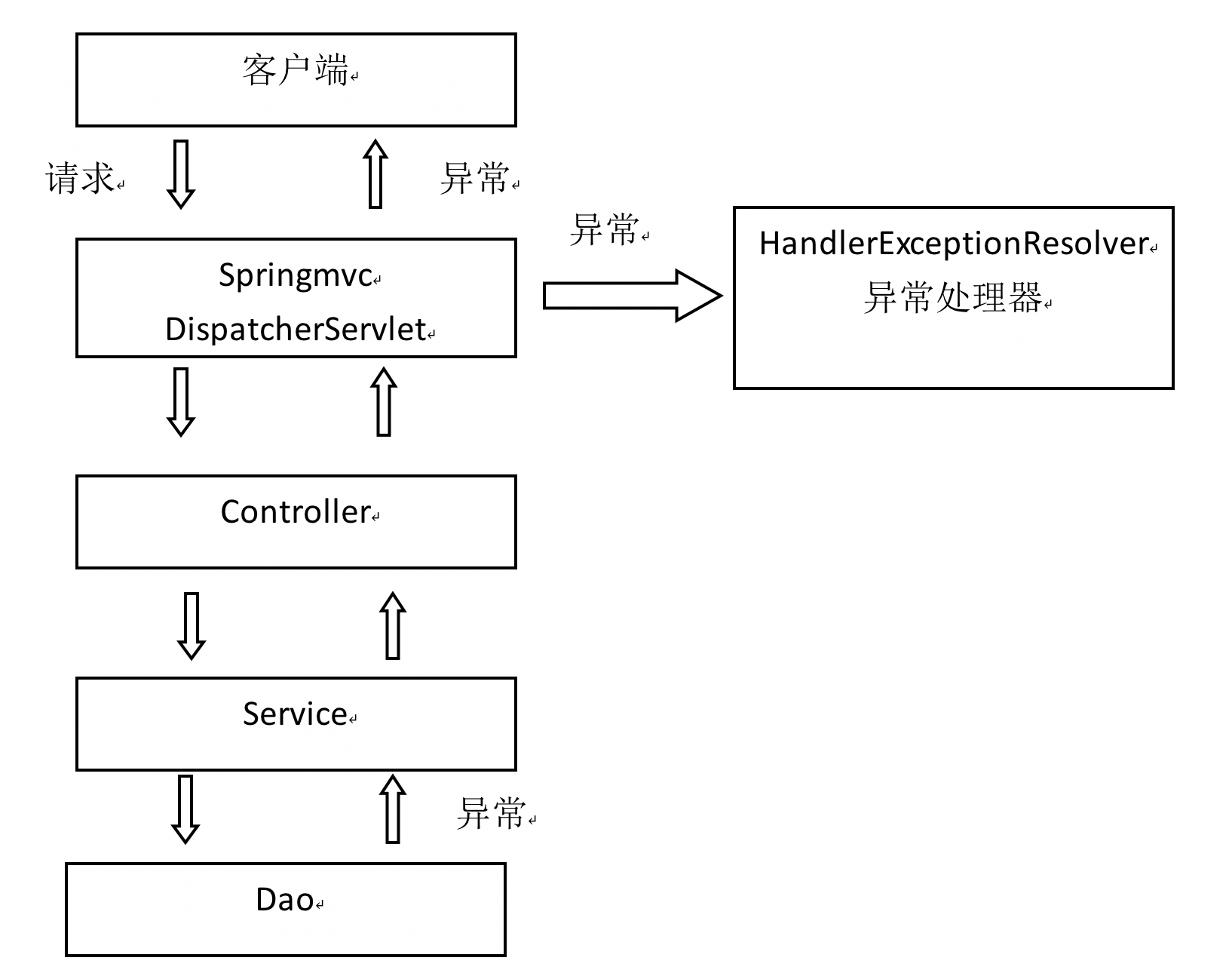其实springmvc自定义异常很简单,大致分为这四步
- 创建自定义异常类并 继承 Exception。
- 抛出自定义类的异常(系统dao、service、controller都可能出现异常,都通过throw new 自定义异常类(String message))向上抛出,最后由springmvc前端控制器交给异常处理器进行异常处理。
- 创建自定义异常处理器并实现HandlerExceptionResolver。
- 配置springmvc.xml的异常处理器
细节:
1.创建自定义异常类并 继承 Exception
public class ItemsException extends Exception{
private String message;
public String getMessage() {
return message;
}
public void setMessage(String message) {
this.message = message;
}
public ItemsException(String message) {
super();
this.message = message;
}
}
2.抛出自定义类的异常
throw new ItemsException("商品信息不能为空");
3.创建自定义异常处理器并实现HandlerExceptionResolver
public class MyHandlerException implements HandlerExceptionResolver{
//obj代表的是抛出异常的位置
public ModelAndView resolveException(HttpServletRequest request, HttpServletResponse response, Object obj, Exception exception) {
ModelAndView mav = new ModelAndView();
//判断异常的类型
if(exception instanceof ItemsException){
//为自定义的ItemsException异常
//强转为ItemsException类型,获取msg信息
ItemsException me = (ItemsException)exception;
//添加错误信息,指定跳转的页面
mav.addObject("error", me.getMessage());
//这里可以设置跳转到不同的view层
mav.setViewName("error");
}else{
mav.addObject("error", "未知异常");
mav.setViewName("error");
}
//最后记得return mav 否则还是会报500错误
return mav;
}
}
4.配置springmvc.xml的异常处理器
<!-- springmvc的异常处理器 class为自定义异常处理器的全包名 -->
<bean class="cn.itcats.ssm.exception.MyHandlerException" />
